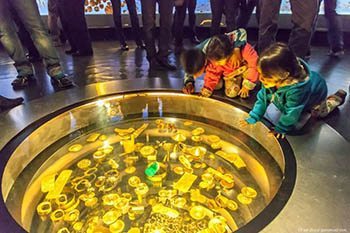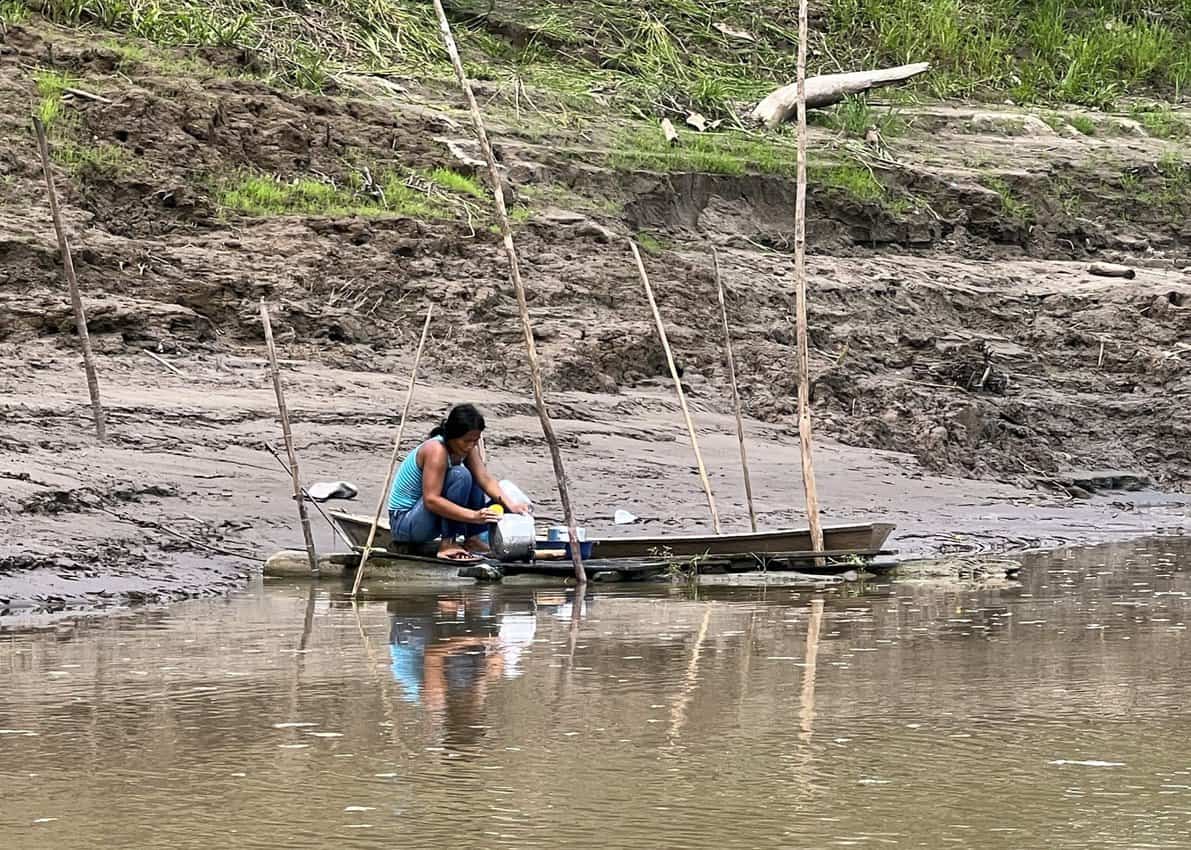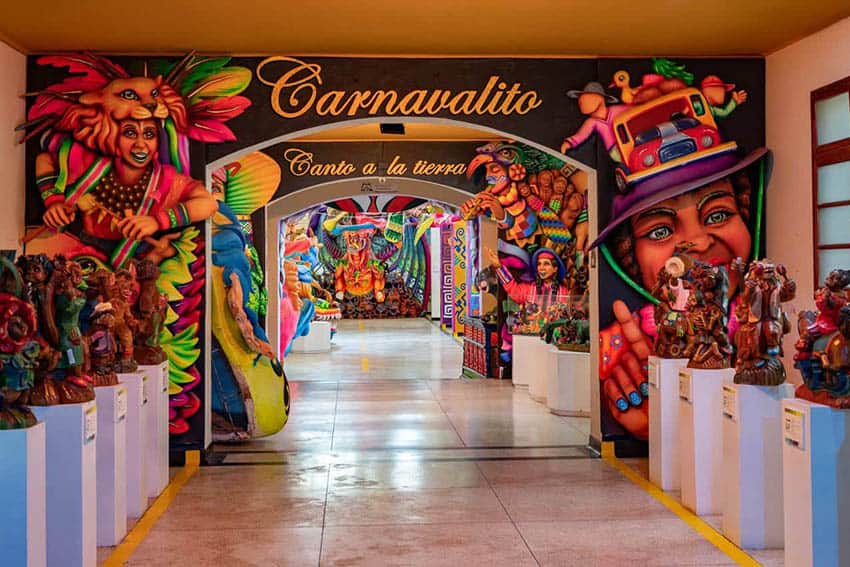
By Andrew Dier

Colombia used to have an international advertising blitz promoting tourism with the slogan, “Colombia: The Only Risk is Wanting to Stay.”
But in Bogotá during its Expoartesanías in December, a massive annual handicrafts fair sponsored by Artesanías de Colombia, a more appropriate slogan would be “Bogotá: The Only Risk is Wanting to Shop.”
For nearly 30 years the feria, as it’s known, has brought the extraordinary cultural diversity that is Colombia to Bogotá – literally.
The Colombian government provides travel and accommodations assistance so that artisans from remote indigenous and Afro-Colombian communities can come to the capital city for the two-week-long event and sell their wares.

More than 800 vendors representing each of Colombia’s 32 departments are set to participate this year, in addition to craftspeople from countries such as India, Brazil, Guatemala, and Iran.
Expoartesaniasm the Big One
While handicraft markets the world over often mean little more than baskets or kitsch, Expoartesanías, occupying six massive pavilions at the modern Corferias fairgrounds, is beyond comparison.
Considered the best handicraft fair in Latin America, the fair attracts nearly 100,000 visitors each year, many of whom spend multiple days shopping. Some plan well in advance to be there on opening day for first dibs, plenty of Colombian pesos in hand, and sufficiently caffeinated.
One such enthusiast is a long time Bogotá resident Diana Barco, an architect and design expert. “What I like most about the fair are the two extremes. There are indigenous artifacts which can’t be found anywhere else like tiples (guitars) from Pasto (in the country’s south), ceremonial rafts from the Vaupés department (bordering Venezuela), carved animals from the jungles of Putumayo (next to Peru), feathered necklaces from the Amazon and carved wood from the Chocó (along the Pacific Coast).”

Santo Domingo School of Arts
“At the same time, there are refined interpretations from the Santo Domingo School of Arts and Crafts in Bogotá, for instance. I also enjoy seeing the classic handicrafts such as hats, hammocks, and backpacks handmade by the Wayúu and Arhuaco Indian tribes of the Caribbean Coast.”
Meanwhile, Sylvia Alejandre, an American from Maryland now living in Bogotá, looks forward to the fair each year before returning to the States for the holidays. She says that “the fair is a great one-stop shopping for Christmas presents.”
Not All Gifts
But if you visit her well-decorated home, it’s apparent that not all of her fair purchases are gifts. “I’ve bought baskets, wooden objects, molas (colorful, appliqué textile hand-stitched by the Kuna Indians near the Panama border), picture frames, pottery, jewelry, and probably a lot of other things I’m forgetting.“

With so much sensory overload, frequent breaks and nourishment is imperative to keep you going. Luckily one of the best aspects of the fair is the food that showcases Colombian cuisine.
That means cheeses from the Tolima province; luladas, a tangy juice drink from Cali; colorful chontaduro from the Pacific, a fruit that comes from palm trees; beef empanadas and plantain chips from the Atlantic Coast and obleas, wafers filled with caramel sauce to satisfy those with a sweet tooth.
Then there is coffee, the essential fair beverage. Its unmistakable aroma wafts through the countless fair corridors as vendors with urns attached to their backs meander the fair pavilions selling tinto – small black coffees –all day long, providing shoppers with the jolt they need to continue their quest for the perfect gift.
Time to relax
Expoartesanias is unforgettable and wonderful, but it is also exhausting. Luckily for the visitor, the city has an excellent number of excellent hotel options.
For luxury, the Marriott Hotel (Avenida El Dorado No. 69b – 53; Tel. (57) 1-485-1111) located minutes from both Corferias and the airport can’t be beaten. When this hotel was inaugurated in August 2009, the occasion was so important for the city, proof of the great strides Bogota has made, that both Colombian President Álvaro Uribe and Bogotá Mayor Samuel Moreno were on hand to celebrate it.
In town, a new local hotel chain BH Hoteles (bhhoteles.com) has a couple of low-key and elegant mid-sized options. BH El Retiro (Calle 80 No. 10–11) faces a park in the upscale Zona Rosa shopping and nightlife district. Other locations include the BH La Quinta (Carrera 5 No. 74 – 52), within easy walking distance to the Zona G restaurant area and the BH La Salle (Carrera 5 No. 58-6) in the heart of the bustling Chapinero neighborhood.
More to come…
With a growing number of international tourists and business travelers, Bogotá is also experiencing an unprecedented boom in hotels. Hilton Hotels has returned to the city, J.W. Marriott, Ibis and boutique Cité Hotel have also built new properties here.
Restaurant options likewise continue to grow. Legendary Andres Carne de Res, Colombia’s most famous restaurant located on the outskirts of Bogotá, has recently opened a second restaurant in the glitzy El Retiro shopping center in town. Occupying four floors, Andres feels like a party.
Another restaurant that has also recently expanded is Rausch Patisserie (two locations: Calle 70 No. 6–37, and Carrera 10 No. 82-90), no doubt the only restaurant in town with a menu that includes matzo ball soup, Philly cheese steak sandwiches, and delicious pizza.

And more to see…
Colombia’s most famous museum, which was once again noted in “1,001 Places to See Before You Die,” is the Museo del Oro – the Gold Museum (Calle 16 No. 5-41).
Telling the story of this land of the legend of El Dorado – the Golden One – the large museum could well be considered an art gallery. Golden objects celebrating indigenous deities never cease to marvel.
Other must-sees include strolling the colonial center, the Candelaria, and visiting the Museo Botero and the impressive permanent collections and special exhibits at the Museo del Banco de la República.
Or how about joining up to two million others on the streets during the Ciclovia each Sunday and on holidays, when cyclists, joggers and dogwalkers take over more than 75 miles of city streets?
Theater fans will be enthralled with the Festival Iberoamericano de Teatro, one of the largest theater festivals in the world, converting the city into one giant stage next March.
There are now several nonstop flight options to Bogotá from these cities in the United States: Atlanta, Fort Lauderdale, Houston, Los Angeles, Miami, New York, Orlando and Washington. Air Canada also provides nonstop service from Toronto.
Whether it’s true or not that ‘the only thing to fear is wanting to stay’ rings true, the fact is that Bogota is a world-class city with many wonderful attractions and is worth a visit at any time.

Andrew Dier is a freelance writer based in Bogotá where he has lived for over 17 years. His work has been published in Time Out New York, Instinct, Hispanic Enterprise, and Curve and he is a regular contributor to the City Paper Bogotá, an English language monthly. He is the author of the Moon Guide to Bogota.
- These 9 U.S. National Parks Require Reservations in 2024 - April 17, 2024
- Take a Hike in Olympic National Park - April 17, 2024
- The Wild Mississippi: 2340 Miles Across Ten States - April 8, 2024




